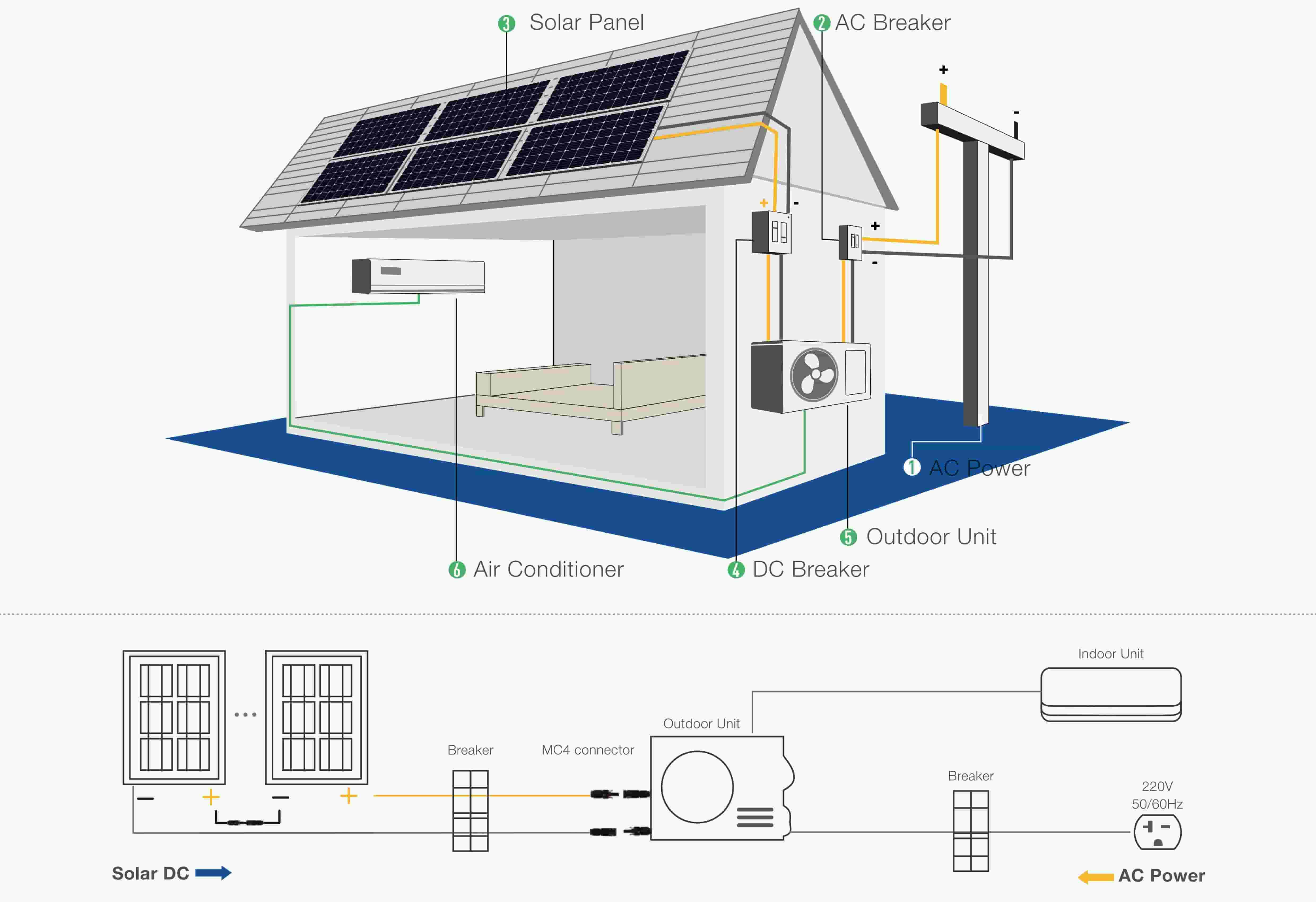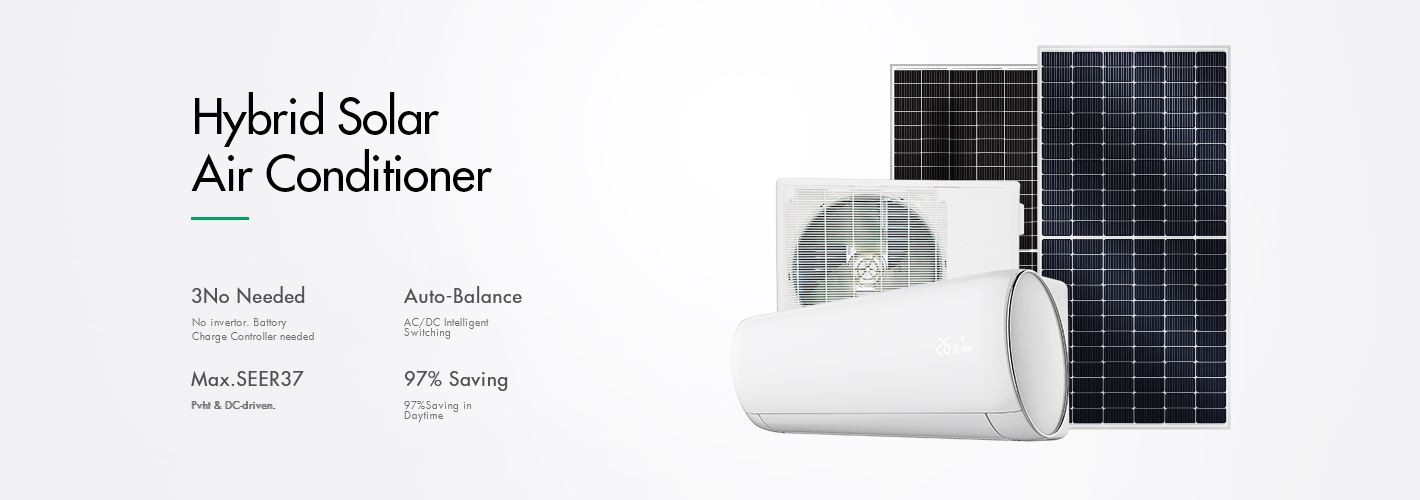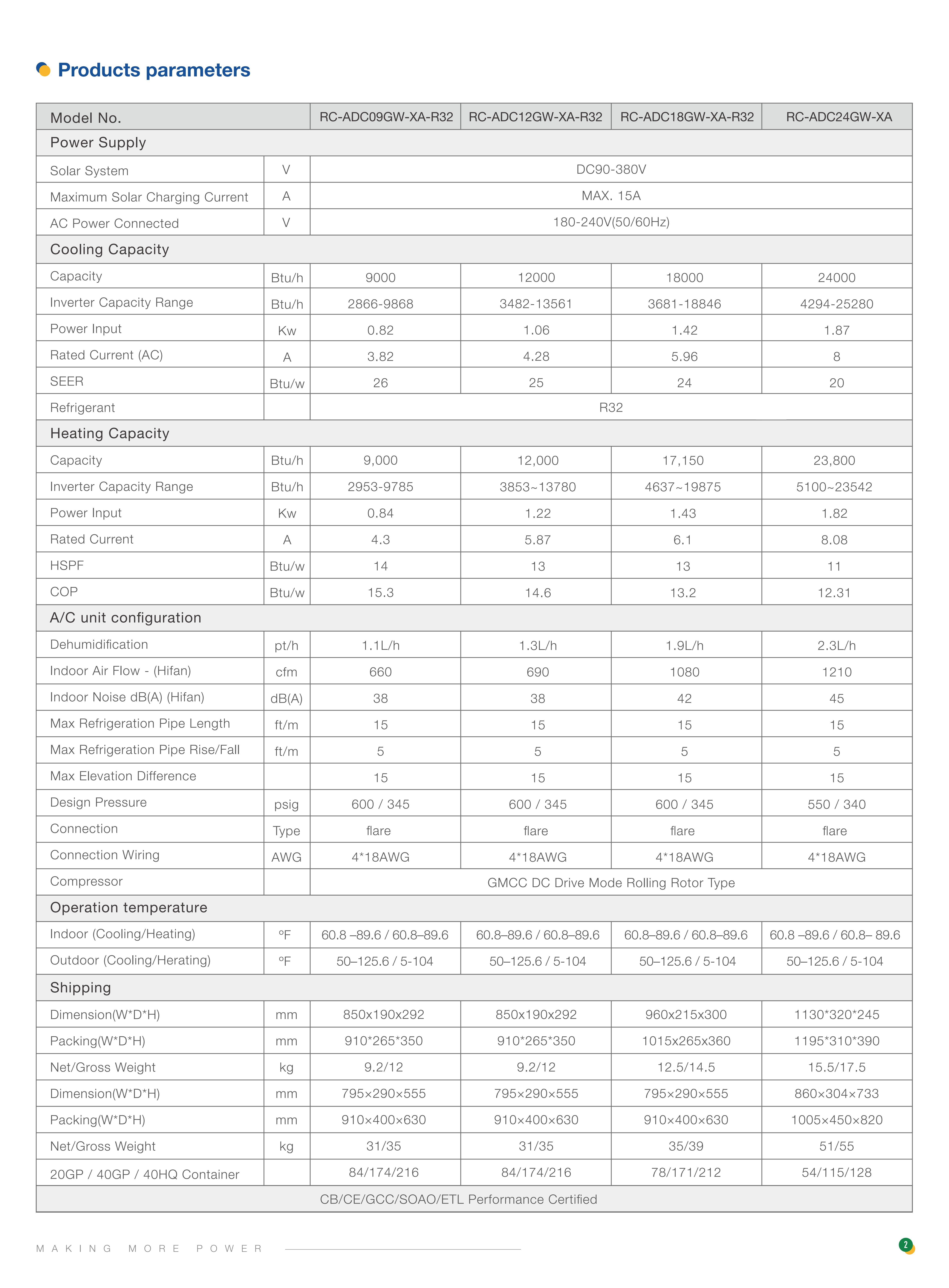Należy pamiętać, że dokładna konstrukcja i wydajność słonecznych systemów klimatyzacyjnych może się różnić. Konsultacja z profesjonalnym instalatorem instalacji fotowoltaicznych lub specjalistą HVAC dostarczyłaby bardziej szczegółowych i dostosowanych informacji w oparciu o konkretne potrzeby i lokalizację.
Napięcie panelu słonecznego :
DC90-380VMaksymalny prąd ładowania energią słoneczną :
15APodłączone zasilanie sieciowe :
180-240V(50/60Hz)Chłodziwo :
R32Kompresor :
GMCC DC Drive Mode Rolling Rotor TypePołączenie :
Flare
Solar air conditioner systems, especially those powered by renewable energy sources like solar power, offer several advantages and a potentially high return on investment. Here are some key benefits R32 solar air conditioner:
1. Energy savings: Traditional air systems consume a significant amount of electricity, to high energy bills Solar air conditioners help reduce or eliminate these costs by utilizing solar power, which is a free and renewable energy source. By harnessing solar energy, you can significantly lower your energy expenses and enjoy long-term savings.
2. Environmental friendliness: Solar air conditioners are environmentally friendly as they rely on clean and renewable energy from the sun. Unlike conventional air conditioners that rely on fossil fuel-based electricity, solar air conditioners help reduce carbon emissions and combat climate change. Choosing an R32 system further enhances the environmental benefits, as R32 refrigerant has lower global warming potential compared to other refrigerants commonly used in air conditioners.
3. Off-grid capability: Solar air conditioner systems can operate off-grid, meaning they can function independently without being connected to the utility power grid. This is especially advantageous in remote locations, areas with unreliable electricity supply, or during power outages. By utilizing solar panels and batteries, you can enjoy cooling even when there is no access to the main power supply.
4. Durability and reliability: Solar air conditioner systems are designed to be robust, reliable, and durable. With proper installation and maintenance, they can last for many years, providing consistent cooling comfort. Quality systems are built to withstand varying weather conditions and are capable of withstanding high temperatures, humidity, and extreme climates.
5. Government incentives and rebates: Many governments and utility companies offer incentives, rebates, and tax credits to promote the adoption of renewable energy technologies. By installing a solar air conditioner system, you may be eligible for such benefits, which can further enhance the return on your investment.

R32 and R410A are both commonly used refrigerants in air conditioning systems. However, there are some differences between the two, particularly in terms of environmental impact and energy efficiency.
1. Environmental Impact: R32 has a lower global warming potential (GWP) compared to R410A. The GWP of R32 is 675, while R410A has a GWP of 2088. This means that R32 has a lower potential for contributing to global warming compared to R410A.
2. Energy Efficiency: R32 has better thermodynamic properties compared to R410A, which can result in higher energy efficiency. Air conditioners that use R32 as a refrigerant can achieve higher cooling capacity with the same or lower power consumption compared to those using R410A. This leads to improved energy efficiency and potentially lower electricity bills.
3. Safety: R32 is classified as a mildly flammable refrigerant, whereas R410A is non-flammable. When handling or operating systems that use R32, it is important to follow appropriate safety precautions. However, the flammability risk associated with R32 is considered relatively low, and manufacturers design air conditioning systems with proper safety measures in place.
4. Availability: R410A has been widely used in air conditioning systems for many years and has an established supply chain. On the other hand, R32 is relatively newer in the market but is gaining popularity due to its improved environmental performance. While R32 systems are becoming more common, the availability and service infrastructure for R32 may not be as extensive as that for R410A.
When it comes to the high return of a solar air conditioner, the choice of refrigerant plays a role, but there are other factors to consider as well. Solar air conditioners utilize solar energy to power their cooling systems, reducing reliance on electricity generated from non-renewable sources. This can lead to cost savings and environmental benefits over the long term. High return on investment can be achieved by considering factors such as the upfront cost of the system, energy savings, maintenance requirements, available subsidies or incentives, and the local climate conditions. Additionally, energy-efficient features, smart controls, and proper sizing and installation of the system are also important for maximizing the benefits of a solar air conditioner.

A small solar-powered air conditioner can work well to keep an attic cool and dry. The unit sits on a shingle roof, just as an attic vent might. These small systems can be purchased (and easily self-installed) for under $500. For larger systems, however, the cost of a solar air conditioning unit varies widely, depending on the type and size of the unit and how much space you want to cool.
For a 24-hour hybrid system, a direct current (DC) 12,000-BTU cooling unit sold by HotSpot Energy can cost up to $2,000, not including solar panels. Six solar panels capable of running the cooling unit can cost up to $1,600. Hybrid systems also rely on AC grid power when solar power is not available, so they need AC/DC inverters as well. Add in inverters, controllers, and mounting hardware, and the cost of a total system can be over $6,000. Similar hybrid systems are also available from SolarAir World International and by regional or local installers.
FAQs:
Q1: Do you support OEM/ODM?
A:Definitely, OEM&ODM service is supported with a certain quantity,including customize logo,package and label;
Q2: What's the production time?
A: The production time is normally 15 working days. but we will always prepare some stocks for popular models.
Q3: Can you provide DDP service?
Odp.: tak, jeśli jesteś klientem osobistym i nie chcesz mieć do czynienia z organami celnymi, możemy świadczyć usługę DDP na Twój adres.
P4: A co z gwarancją i sposobem reklamacji ?
Odp.: Okres gwarancji wynosi 5 lat od otrzymania produktu. Nasz profesjonalny zespół posprzedażny zajmie się wszystkimi kwestiami gwarancyjnymi.